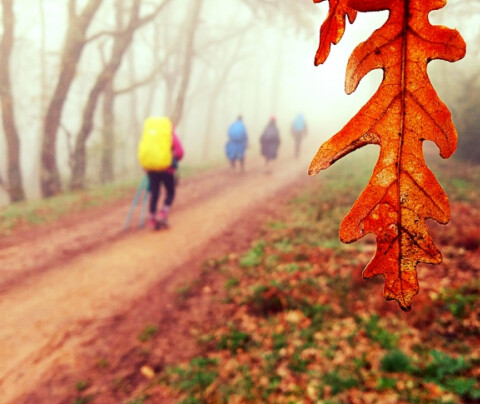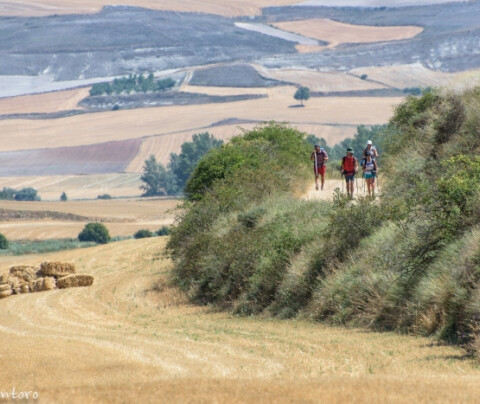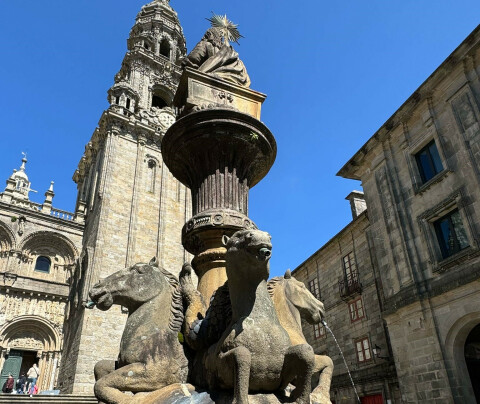Tips to do the Camino
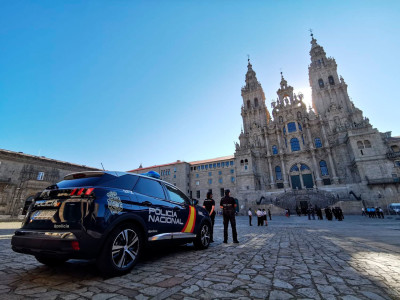
Is the Camino de Santiago safe? Many pilgrims who travel any of the Jacobean Routes for the first time ask themselves this question. And the answer is clear, quick and concise: absolutely yes, the Camino de Santiago is safe. Even if we do it alone, one of the best options to live the experience intensely.
Spain is among the 25 safest countries in the world and is the ninth with the lowest homicide rate. The Camino de Santiago is a priority for the Spanish Government itself, which intensifies security measures on the different routes during the busiest times of the year, such as the summer months or Easter.
In addition, the very spirit of the route and the camaraderie that is breathed in it facilitate that the biggest problems that the pilgrim may encounter on their Way are small thefts, losses on the route or small sections in which walkers and vehicles have to share via.
Security reinforcement for the Holy Year
National Police and Guardia Civil are in charge of guaranteeing security on the Camino de Santiago. On the occasion of the celebration of the Compostela Holy Year in 2021 and 2022, both bodies have redoubled their efforts to guarantee the safety of the Routes, pilgrims and visitors to the towns through which the Camino passes.
‘We protect the Camino: jubilee year 2021-2022’ is the name of the special device launched this year by the National Police. Agents deployed throughout the territory carry out surveillance and care for the pilgrim, guaranteeing that they can make the Camino safely.
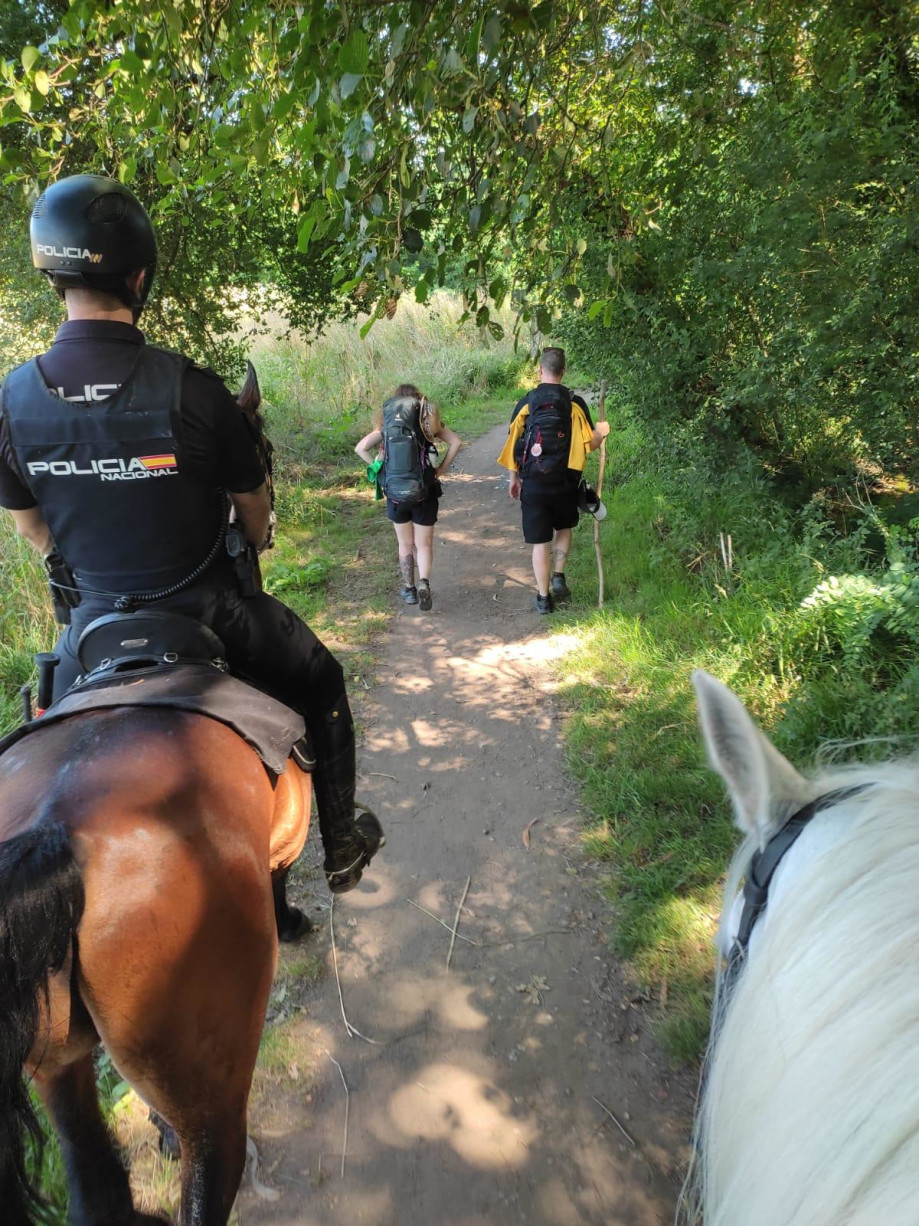
Police officers have been appointed as points of contact at each stage of the Jacobean Routes. They are in charge of protecting the Camino, as well as collaborating with institutions, organizing promotional activities and spreading advice so that pilgrims walk safely.
In addition, the police stations themselves and other police units are official Credential stamping centers.
The efforts to redouble security in this Holy Year are completed with the ‘National Security Prevention Campaign’ launched by the Guardia Civil. Aimed at pilgrims who make the Camino Frances in this Xacobeo 2021-2022, this campaign includes the dissemination of messages and advice to walkers, bicigrinos and pilgrims on horseback.
The campaign is completed with training sessions between agents of the Guardia Civil and experts on the Camino de Santiago or the interrelation with the application for pilgrims of the Association of Municipalities of the Camino de Santiago.
Alertcops: the app that helps you on the Camino
Along with the deployment of the security forces on the Jacobean Routes, the pilgrims have an ally in technology. Alertcops is a free mobile application that allows you to communicate in real time from your mobile any type of alert or emergency, in addition to automatically sending your position to the police, who will know where you are and can help you.
In addition, and thanks to the efforts of the Guardia Civil, pilgrims who download it will receive a welcome message and safety advice at different points on their itinerary.
As a novelty for this Holy Year, the app has the function Public Guardian of the Camino de Santiago, with which the pilgrim will not only share their current position, but also a center managed 24 hours a day and 7 days a week will be able to access their latest 10 positions, being able to track a good part of your route.
AlertCops also offers to activate a direct chat (WhatsApp type) with the closest security center and allows the exchange of all kinds of information, photos and videos. The app is available in 7 languages and has real-time chat translation in 100 languages.
Tips por a save Camino de Santiago
Guaranteed safety on the Camino de Santiago (St. James's Way) is no longer a pilgrim just taking a series of precautions to minimise risks and make the route easier for other walkers.
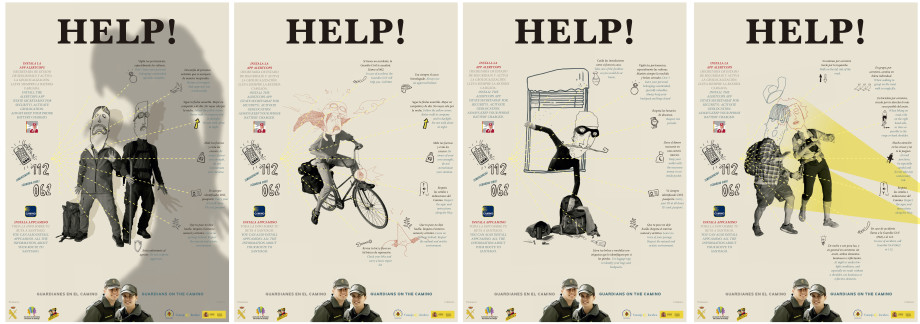
Tips before leaving
- Bring suitable material and get into shape physically for the Camino. Muscle aches, blisters or sore feet are the pilgrim's most common woes. To try to reduce these woes to a minimum and in order to avoid major problems it is recommended to get into shape physically before starting the walk. And do it with the right material: adjustable anatomic backpack; lightweight comfortable and already used hiking shoes; technical t-shirts and a small first aid kit.
- Bring only the bare essentials. We all like to have a photographic memento of the Camino (Way), listen to music, buy a souvenir or two or watch something on the Tablet when we arrive at the hostel. But for greater security it's better that whilst you walk, take only the bare essentials. That way you don't have to worry about the small stuff and focus on what is important: enjoy the Route. Remember that Correos (Spanish Postal Service) has services to help one in these situations such as the Paq Mochila, with which we transport your luggage from stage to stage daily; or the Paq Peregrino, with which you can send packages with your purchases or excess baggage to any point of the Camino (Way).
- Don't carry large amounts of money with you. It is always recommended to take some money with you for occasional expenses. You can use the credit card in all the towns of the Camino (Way), as well as using the automatic teller machines (ATMs) in the event of needing money.
Whilst walking
- Follow the signs. All the itineraries of the Camino de Santiago (St. James's Way) are signposted with yellow arrows, stone markers, signs ... Always follow the signs and when in doubt, ask. There will always be someone willing to help you. Technology is also at the service of the pilgrim, that's why you have at your disposal maps and apps which allow one to obtain his/her geoposition and specify the route.
- Uphold road safety. Most of the Camino de Santiago (St. James's Way) runs along trails and forest tracks. But sometimes one must make the pilgrimage on asphalt. When this happens, walk on the left side of the road (on the opposite direction of the road of the oncoming traffic) so you can see the cars coming. And if there is a hard shoulder, always walk on the hard shoulder. If travelling in a group, it's best to walk in a row one at a time. And when crossing the road, avoid doing so on a bend or elevation change. If walking at night or with low visibility, try to wear reflective or eye-catching clothes.
- Keep an eye on your belongings. The largest number of petty thefts or robberies occur in hostels. Although the pilgrims are governed by Jacobean values such as solidarity, companionship and fraternity, it's best thing to keep an eye on one's belongings when sharing space with other people Increasingly hostels have lockers to keep one's belongings safe.
And the cycling pilgrims?
- Wear an approved helmet
- Caution on the road. When on a road, cycle on the right and use the hard shoulder. If travelling in a group, in a maximum two by two row and always cycle on the hard shoulder.
- Keep an eye on your bike. The bike is the companion of all cycling pilgrim. Therefore, in order to prevent thefts, it is recommended that you to stay in hostels which have a secure location to their storage, and always leave them in plain sight at lunchtime or when taking a break and use padlocks and alarms along your route
If along the Camino de Santiago (St. James's Way) you suffer from any mishap, remember that the emergency number in Spain is 112. We hope that all these tips will help you to have a safer Camino de Santiago (St. James's Way). Buen Camino!
Your email address will not be published.
Mandatory fields are marked with *




